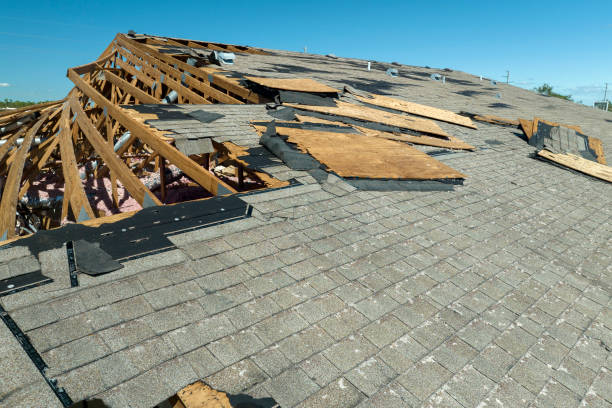Storm Damage Restoration: Getting Your Home Back After Nature Hits Hard

Let’s cut through the confusion and look at what really matters when your home gets hammered by Mother Nature.
The Hidden Dangers of Untreated Storm Damage
Rotted roof decking requiring complete replacement
Mold growth throughout attic systems (remediation often costs $2,000-8,000)
Damaged insulation that reduces energy efficiency
Compromised structural elements as water follows framing
Ceiling and wall damage that may not appear for weeks or months
The statistics paint a clear picture: according to insurance industry data, homes with unaddressed storm damage typically develop secondary problems costing 3-5 times the original repair within 18 months. That $1,500 roof repair you put off can easily turn into a $6,000 nightmare by next year.
Types of Storm Damage: Identifying What You're Dealing With
Wind Damage: More Than Just Missing Shingles
Common Wind Damage Signs:
Distinctive curved or faceted glass roof
Victorian or Edwardian architectural influences
Glass on all sides including overhead
Premium pricing ($25,000-50,000+)
Victorian or Edwardian architectural influences
Makes a bold architectural statement
Hail Damage: The Silent Roof Killer
Identifying Hail Damage:
Bruising or dark spots on shingles where granules have been knocked loose
Exposed asphalt mat where protective granules are missing
Cracked or broken shingles from larger hailstones
Dented gutters, downspouts, and metal flashing
Damaged window screens, A/C condensers, and other exterior features
The granules on asphalt shingles aren’t just for appearance; they protect the shingle from UV degradation. Once hail knocks these granules loose, the clock starts ticking on accelerated roof deterioration. A hail-damaged roof might not leak immediately but will typically fail 5-7 years earlier than its expected lifespan.
Flooding and Water Intrusion: The Compounding Threat
Water Damage Indicators:
Water stains on ceilings or walls (often yellowish or brownish)
Bubbling or peeling paint and wallpaper
Warped or buckled flooring
Musty odors indicating potential mold growth
Door or window frames that suddenly stick or won't close properly
Visible mold growth (usually appearing 24-72 hours after water exposure)
Debris Impact: Punctures and Penetrations
Impact Damage Signs:
Obvious punctures through roofing materials
Cracked or broken siding
Damaged fascia, soffit, or trim components
Broken or cracked windows
Dents or holes in gutters and downspouts
Even small punctures can allow surprising amounts of water into your home. A half-inch hole in your roof can admit several gallons of water during a moderate rainfall, potentially damaging areas far from the entry point as water travels along structural members.
The Critical First Steps After Storm Damage
Safety First: Avoiding Additional Risks
Before anything else, ensure your safety:
Stay clear of downed power lines (assume they’re live)
Beware of broken gas lines (if you smell gas, leave immediately and call your utility)
Watch for unstable structures or hanging debris
Be cautious on wet or damaged surfaces that may be slippery
Use proper protective gear if you must enter damaged areas (helmet, gloves, sturdy boots)
No property is worth risking your safety. Leave severely damaged structures to professionals until they’ve been properly evaluated.
Documentation: The Foundation of Your Insurance Claim
Take photos and videos of all visible damage (exterior and interior)
Capture wide shots showing the overall condition and close-ups of specific damage
Document personal property that's been damaged
Keep a written log of all damage-related events, conversations, and expenses
Preserve damaged items until an adjuster has inspected them
Most insurance disputes stem from inadequate documentation. The more thoroughly you record the damage, the stronger your position if questions arise later.
Emergency Repairs: Preventing Secondary Damage
Water stains on ceilings or walls (often yellowish or brownish)
Bubbling or peeling paint and wallpaper
Warped or buckled flooring
Musty odors indicating potential mold growth
Door or window frames that suddenly stick or won't close properly
Visible mold growth (usually appearing 24-72 hours after water exposure)

